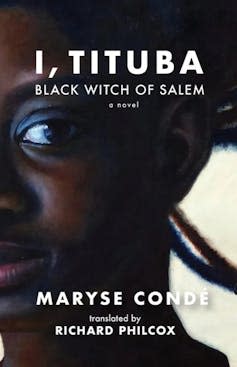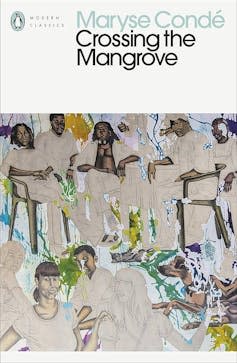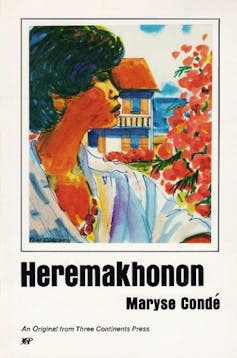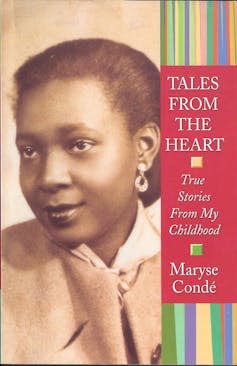Five books by Maryse Condé to introduce you to the award-winning Guadeloupian writer
Guadeloupian writer Maryse Condé, who has died aged 90, left a body of work which includes many deeply nuanced and wide-ranging responses to the centuries of often violent contact between cultures and societies.
Take her bestselling pair of historical novels Segu (1984) and The Children of Segu (1985). Set in an early 19th-century royal court in what is now Mali, these books explored the profound changes brought to a highly complex society by the slave trade, the arrivals of Islam and then Christianity, and European colonialism.
Condé’s work always challenged simple solutions to complex problems. It drew upon the intersections of class, ethnicity, gender, origins and race, and the myriad competing perceptions of social status that sought to establish a basis in any of these.
Condé’s startling work won her The New Academy Prize in Literature, known as “the alternative Nobel prize”, in 2018, among many other awards. It is hard to choose which of her books are among her best, so here are five which resonate with many of our current debates about identity, memory and our troubled shared histories.
1. Tituba, Black Witch of Salem) (translated by Richard Philcox)

Her 1986 novel Moi, Tituba sorcière… Noire de Salem(published in English as Tituba, Black Witch of Salem with a foreword by American feminist activist and thinker Angela Davis) is considered by some to be the greatest novels about slavery, power and perceptions of witchcraft.
The story draws in part upon what remains in the historical record of a young woman called Tituba, who was sold into slavery in the Caribbean and then North America in the late 17th century. Tituba was among the first women to be accused of witchcraft during the Salem witch trials.
Condé crafts a richly imagined life for Tituba, setting the first half of the book in the brutal violence of the slave economy in Barbados. The second half is set in Boston and Salem, where a more insidious violence is politely buried under layers of hypocrisy before exploding in the Salem persecutions.
Condé’s novel speaks powerfully to the divisive legacies of slavery and colonialism, as well as to the growing awareness that what counts as “knowledge” – in the novel, as opposed to “witchcraft” – has not been decided equally.
2. Crossing the Mangrove (translated by Richard Philcox)

The complexity of Caribbean identity is at the heart of Crossing the Mangrove (1989) Each chapter is narrated by a different character as they attend the night-long wake of the mysterious Francis Sancher.
In this short novel, the rich diversity of this one small community is set out, with class, colour, education, gender, history and political commitment all playing a part in the characters’ thoughts of the deceased Sancher, of themselves, and of each other.
Secrets, blind spots, lies and prejudices emerge over the course of the night. Some will be revealed to the community, but some are only clear to the reader. Condé portrays the rich diversity of Caribbean society, alongside the universal experience of loss and grief.
Some have linked the title to Lord Alfred Tennyson’s poem Crossing the Bar (1889), which is interpreted by some as an elegy about passing into the afterlife. Others have pointed to the difficulty of moving through a mangrove, with its multidirectional roots, which could be seen as a metaphor for the complexity of identity.
3. Heremakhonon (translated by Richard Philcox)

Condé also explored the idea of roots in her first novel, Heremakhonon (1976), a novel that traces the itinerary of a young black Guadeloupian woman who absorbed the lesson both from her family and from the French education system that she was “French”.
Yet when she arrives in Paris to continue her studies, she is told she is really African, and should go there to find her authentic roots. She does so, only to be told she is not truly African, but Caribbean.
Condé writes with verve and a great deal of acute social critique, pointing to what happens to an individual when their identity is dragged into grand theoretical ideas of any stripe.
4. Tales From the Heart: True Stories From My Childhood (translated by Richard Philcox)

Condé returned to these themes in several of her autobiographical texts, particularly Le cœur à rire et à pleurer : souvenirs de mon enfance (2001), published in English in as Tales From the Heart: True Stories From My Childhood . She describes her childhood in a comfortable middle-class Guadeloupian family and her gradual political awakening to what her brother calls “alienation”.
In the book she writes of how her parents fetishise and impose on their children a certain fantasy version of metropolitan white French culture. They disdain Guadeloupian culture, the Créole language and any connection to a Black identity.
Towards the end of the book, the teenage Condé realises “I was a ‘black skin, white mask’ and Frantz Fanon was going to write a book with me in mind”. Here Condé references the seminal text, Black Skin, White Masks, by the Martinican theorist and psychiatrist Frantz Fanon, which explored the effects of colonialism and racism on the psyche, and the experiences of people of colour in a white-dominated world.
5. The Journey of a Caribbean Writer (translated by Richard Philcox)
One of Condé’s last books, The Journey of a Caribbean Writer (2014), collects some of her lectures and essays, along with two previously unpublished texts.
It gathers many of her thoughts on the relationships between the Caribbean and Africa; the space the sociologist Paul Gilroy called the Black Atlantic. This describes the mixing of black cultures with other cultures from around the Atlantic; diaspora and globalisation; and the happenstance of the places we are born and the languages and cultures we inherit and encounter.
This book alone is a worthy introduction to the work of one of the most complex, most honest, and yet most engaging and hopeful of contemporary thinkers.
This article is republished from The Conversation under a Creative Commons license. Read the original article.

Audrey Holdhus Small works for the University of Sheffield. He/she receives funding from the University of Sheffield.

 Yahoo News
Yahoo News 